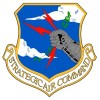Now that my husband and I have finally completed our tax returns, it is time to catch up and work on the website. As I was browsing though the comments, I came across the comment below made by site member, James Turner. Unfortunately it had gotten buried (as many things do on this site…working on improving this) but I thought James did a wonderful job on his comment and question, and certainly worthy of a post, so here it is.
Now let’s see what if any followers of Ramey can help answer James’ question.
Shared By James Turner:
I just finished reading a book about B-29s written (in part) by Curtis LeMay. It was an interesting account of the development and implementation of strategic bombing in general and the role of the B-29 in particular. In the book, Gen. LeMay states that the B-36 (the follow-up to the B-29) was developed for use against Germany if and when Britain fell to the Nazis. The B-36 was intended to allow the U.S. to strike Germany directly from the U.S. or other bases in the Western Hemisphere. That got me thinking. Why was Ramey AFB used by SAC as a base for long-range intercontinental bombers – such as the B-36 – when other bases were much closer to the Soviet Union (our principal enemy after the fall of Nazi Germany)? Why were nuclear weapons stored at Ramey? What were their intended targets? I’m struggling to understand what role the SAC unit at Ramey AFB played in post World War II global politics – especially in the pre-Cuba time frame. Was the intent to project power to Central and South America? Was Ramey beyond the first strike capability of the Soviet Union so that it could launch a retaliatory strike? Any clarification would be appreciated!

 Membership Area
Membership Area Cart
Cart